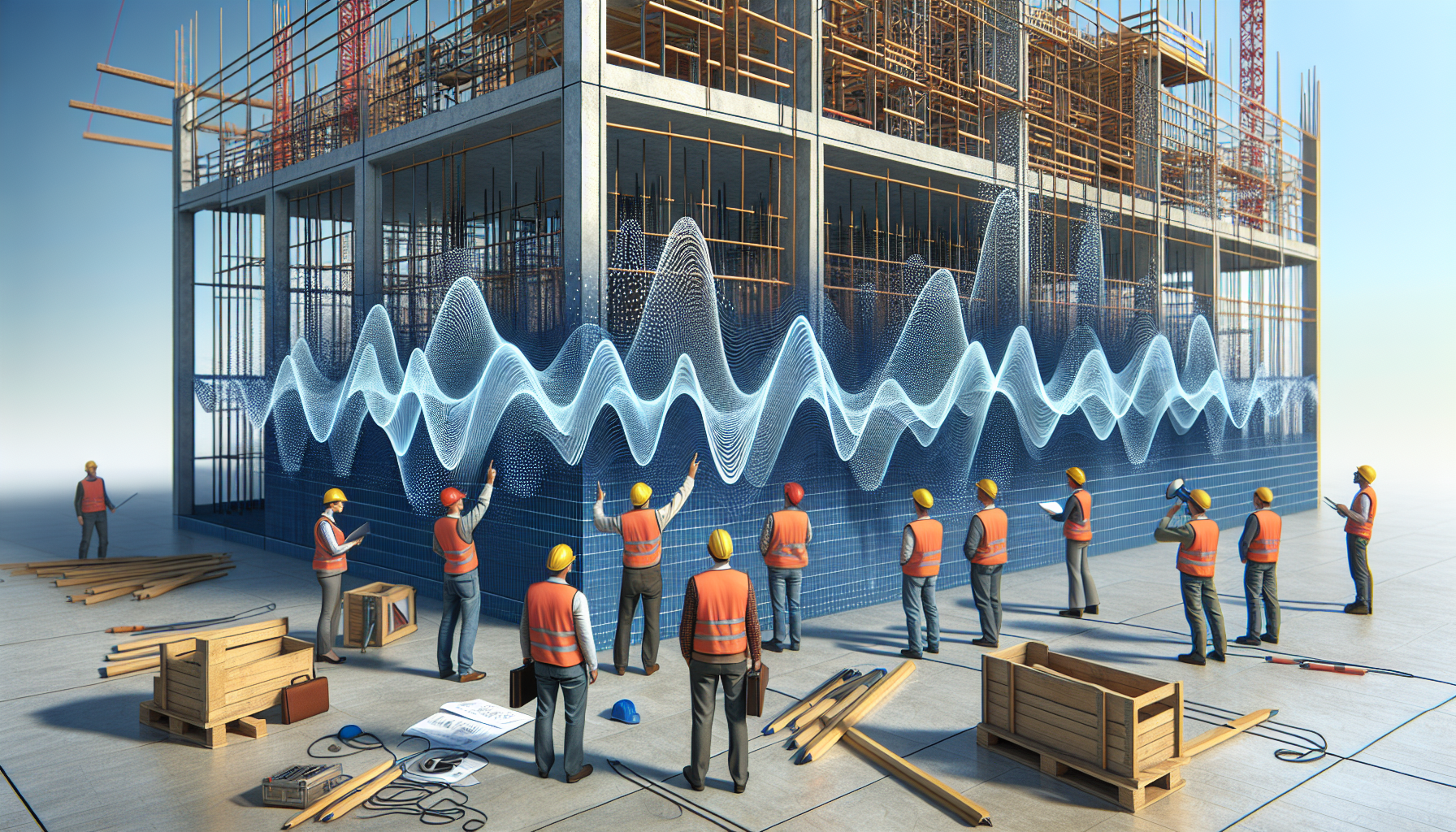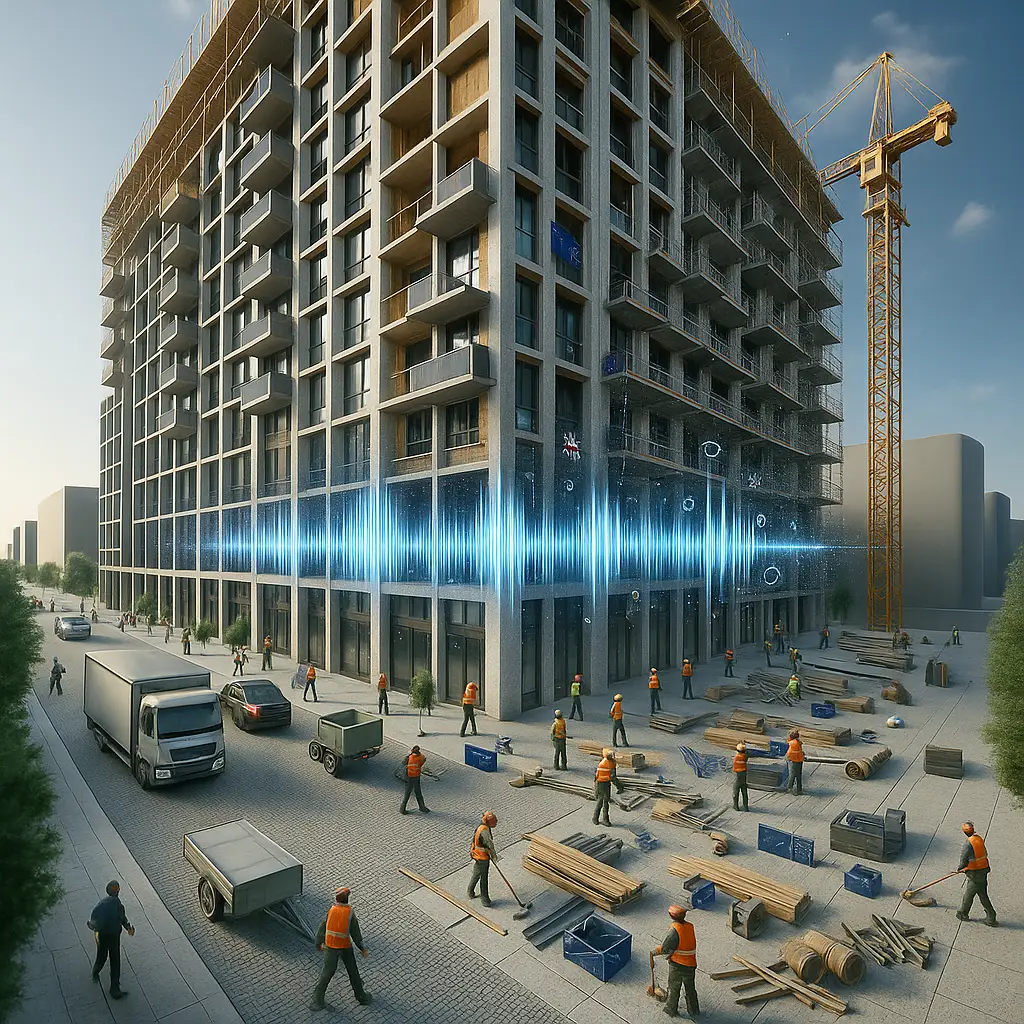The Importance of Addressing Sound Transmission in Modern Methods of Construction
In today’s rapidly evolving construction industry, achieving optimal sound transmission control has become a paramount concern. Modern construction sound transmission involves innovative designs and materials, but also new challenges. In this article, we will explore how modern methods of construction (MMC) address sound transmission issues, the impact of poor sound insulation on inhabitants, and the specific steps that can be taken to mitigate these problems. We’ll also delve into how Ratio Seven, a leading construction consultancy, adeptly navigates these complexities to ensure unparalleled acoustical performance in their projects.
The Science Behind Sound Transmission
To effectively address sound transmission, it’s crucial to understand the fundamental principles of acoustics:
- Sound Waves: Vibrations that travel through the air or another medium and can be absorbed, reflected, or transmitted.
- Frequency: Refers to the number of vibrations per second, measured in Hertz (Hz). Different frequencies can be affected differently by soundproofing materials.
- Decibel (dB) Levels: A unit that measures the intensity of sound. Higher dB levels indicate louder sounds.
Modern construction sound transmission involves controlling these elements to reduce noise levels within buildings and between adjacent spaces.
Factors Influencing Sound Transmission
Several factors can influence sound transmission in modern construction:
- Material Density: Denser materials generally provide better sound insulation.
- Building Design: The layout can significantly affect how sound travels through a building.
- Joints and Seals: Proper sealing of joints can prevent sound leakage.
- Vibration Isolation: Use of materials and design techniques that prevent the transmission of vibration through structural components.
Innovations in Modern Construction Sound Transmission
Innovations in MMC have introduced new materials and techniques designed to reduce sound transmission. These include:
- Acoustic Insulation: Advanced insulation materials that offer excellent sound-dampening properties.
- Soundproof Drywall: Double-layered drywall that significantly reduces sound transmission between walls.
- Floating Floors: Floors designed with a layer of cushioning material that isolates vibrations, thus reducing impact noise.
- Double Glazing Windows: Windows with two layers of glass and a gap in between to reduce noise from outside.
Ratio Seven leverages these advanced materials and techniques to enhance soundproofing in modern construction projects, ensuring a more comfortable and quieter living environment.
Challenges in Modern Construction Sound Transmission
Despite technological advancements, several challenges still exist:
- Cost: High-quality soundproofing materials and techniques can be expensive.
- Space Restrictions: Some soundproofing methods require additional space, which may not be feasible in all construction projects.
- Complexity: Implementing soundproofing measures often adds complexity to construction projects, requiring specialised expertise.
At Ratio Seven, we employ a multidisciplinary approach to tackle these challenges, combining architectural innovation, engineering precision, and cost-effective solutions.
Best Practices for Soundproofing in Modern Construction
Implementing soundproofing measures effectively can significantly enhance a building’s acoustical performance. Key best practices include:
- Optimising Building Layouts: Designing floor plans to minimise sound transmission between spaces.
- Using High-Performance Materials: Incorporating materials with excellent sound-dampening properties.
- Sealing Holes and Gaps: Ensuring no air gaps through which sound can travel.
- Isolating Mechanical Systems: Reducing noise from HVAC systems and other machinery by isolating them from structural components.

The Role of Ratio Seven in Soundproofing Modern Construction
As a leader in the construction consultancy sector, Ratio Seven excels in addressing sound transmission issues. Our comprehensive approach includes:
- Acoustical Engineering: Expert analysis and solutions to optimise sound insulation.
- Material Selection: Choosing the most effective materials for each specific project.
- Quality Assurance: Rigorous testing to ensure soundproofing measures meet or exceed industry standards.
Case Studies: Successful Sound Insulation Projects by Ratio Seven
To illustrate our expertise, here are a few case studies where Ratio Seven successfully addressed sound transmission concerns:
- High-Rise Apartments: Utilised advanced materials and innovative design to ensure excellent sound insulation between units.
- Office Buildings: Implemented floating floors and acoustic insulation to create a quiet and productive work environment.
- Luxury Hotels: Integrated soundproof drywall and double-glazing windows to offer guests peace and tranquillity.
Sound Transmission Summary
Addressing sound transmission issues in modern construction is critical for creating comfortable and functional living and working spaces. Through a deep understanding of acoustical science, innovative materials, and cutting-edge techniques, challenges can be surmounted. Ratio Seven is at the forefront of these efforts, helping clients achieve superior sound insulation in a variety of construction projects.
FAQs
What are the main factors influencing sound transmission in modern construction?
Several factors influence sound transmission in modern construction, including material density, building design, joints and seals, and vibration isolation. By understanding these factors, builders can develop strategies to minimise noise levels within buildings and between adjacent spaces.
How does Ratio Seven address the challenges of soundproofing in modern construction?
Ratio Seven employs a multidisciplinary approach to tackle soundproofing challenges. This involves combining architectural innovation, engineering precision, and cost-effective solutions. We prioritise material selection, sealing of joints, and the optimisation of building layouts to ensure excellent sound insulation.
What innovative materials are used in modern construction to improve soundproofing?
Innovations in modern construction include acoustic insulation, soundproof drywall, floating floors, and double-glazing windows. These materials are designed to offer superior sound-dampening properties and are widely used in various construction projects to enhance soundproofing.
Building for Peace and Privacy
Sound transmission is more than just a technical issue — it affects how people feel in the spaces they live and work in. Poor sound insulation can lead to discomfort, stress, and even conflict. Good acoustic design, on the other hand, makes a real difference to the quality of life.
At Ratio Seven, we work closely with architects, developers, and homeowners to deliver practical, high-performing solutions tailored to each project. Whether you’re designing a block of flats, converting an old building, or building from scratch, we help you meet acoustic standards without overcomplicating things.
If you’re looking for expert advice on sound insulation or want to make sure your next build meets Part E of the Building Regulations, get in touch with us today.




